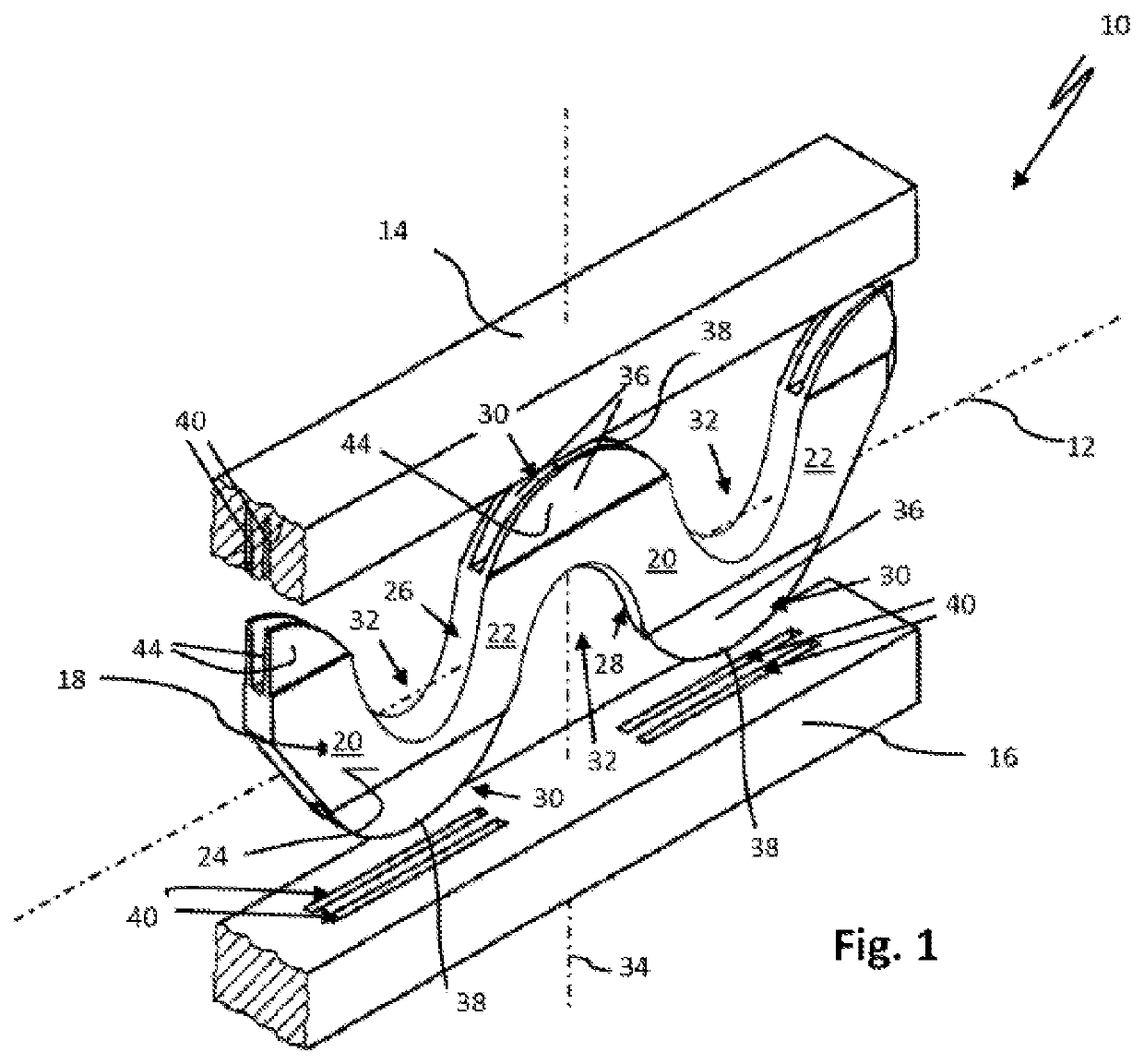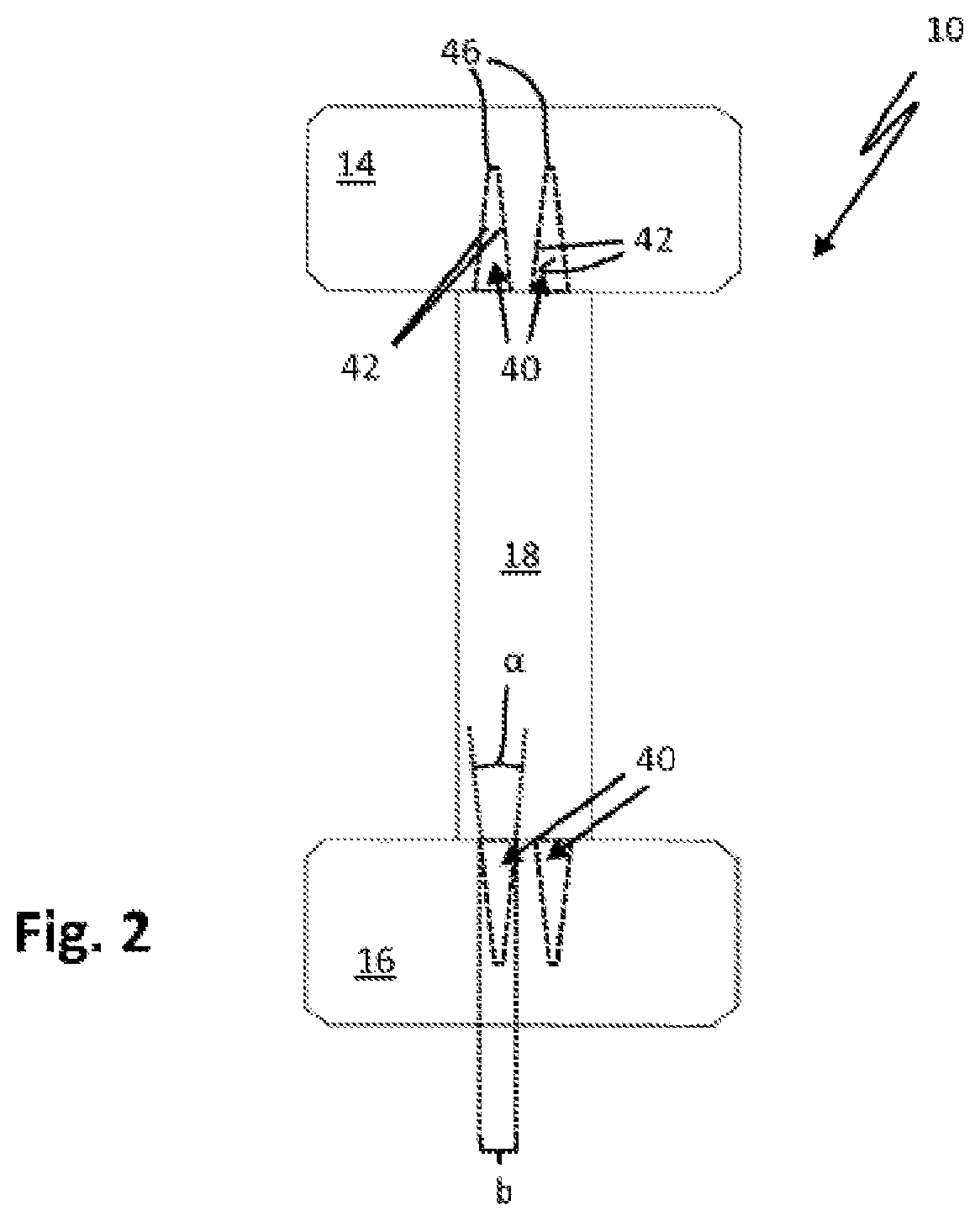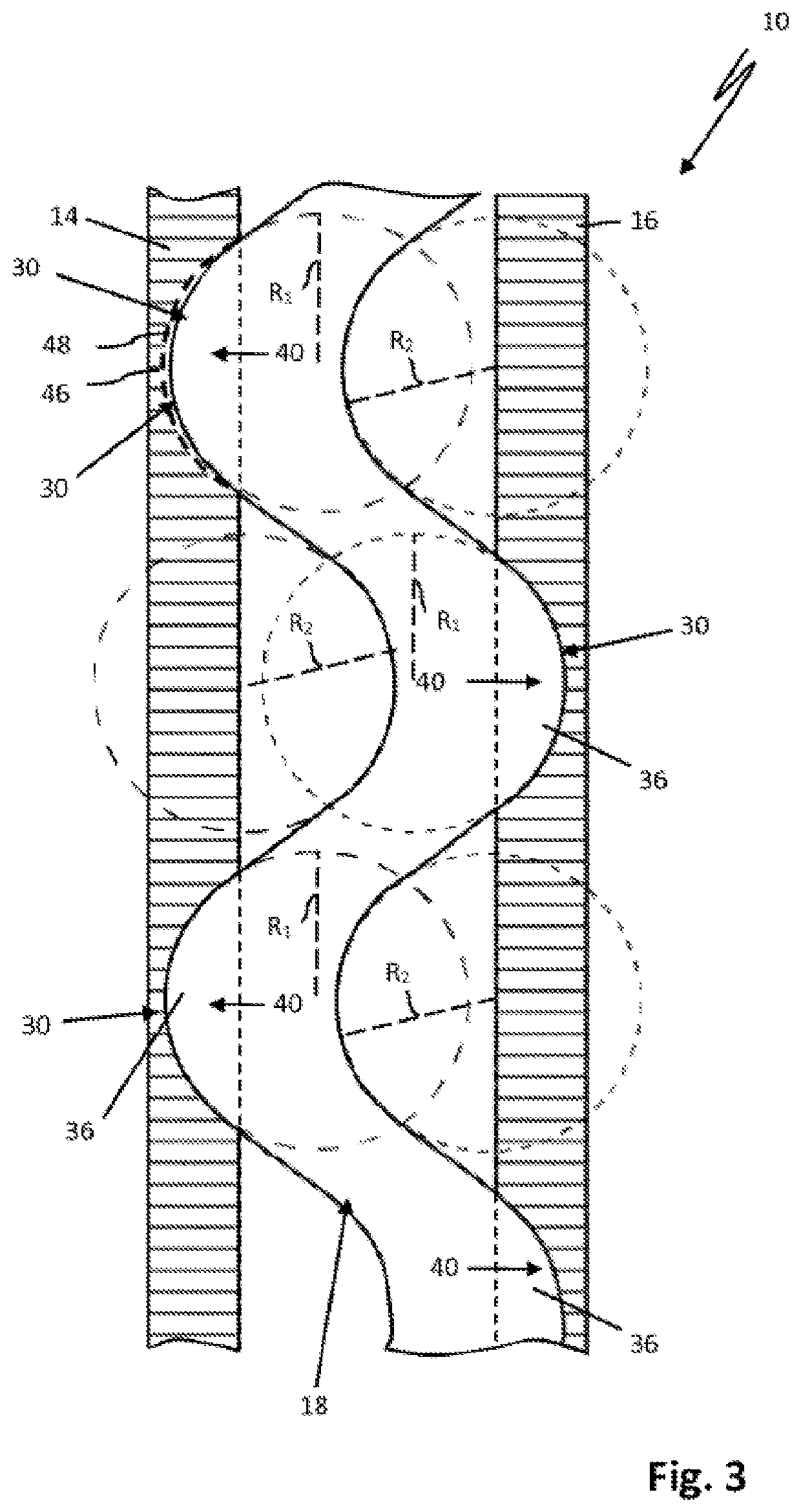Trussed girder for the construction industry and method for producing a trussed girder of this kind
a technology for girders and construction, which is applied in the direction of girders, trusses, joists, etc., can solve the problem that girders cannot be produced at a high cost, and achieve the effects of simple and less expensive production, high load-bearing capacity, and flexural rigidity
- Summary
- Abstract
- Description
- Claims
- Application Information
AI Technical Summary
Benefits of technology
Problems solved by technology
Method used
Image
Examples
Embodiment Construction
[0024]FIG. 1 shows an exploded perspective view of the components of a portion of a trussed girder 10 for the construction industry. The trussed girder 10 extends a few meters in the direction of the longitudinal axis 12 thereof and has dimensions which are common for a trussed girder of this kind in the construction industry. It is self-evident that the trussed girder 10 can be provided in special lengths, in particular for special constructions, as can be required in formwork for concrete ceilings or concrete walls.
[0025]The trussed girder 10 has an upper flange 14 made from square timber and a lower flange 16 made from square timber. A strut run 18 which is formed as a single piece is used to connect the two flanges 14, 16. The strut run 18 is formed as a single-piece wood-base material board blank, in this case as a high-density fiber board blank. The strut run 18 therefore consists of a high-density wood fiber material.
[0026]The strut run has struts 20, 22, which are each arran...
PUM
 Login to View More
Login to View More Abstract
Description
Claims
Application Information
 Login to View More
Login to View More - R&D
- Intellectual Property
- Life Sciences
- Materials
- Tech Scout
- Unparalleled Data Quality
- Higher Quality Content
- 60% Fewer Hallucinations
Browse by: Latest US Patents, China's latest patents, Technical Efficacy Thesaurus, Application Domain, Technology Topic, Popular Technical Reports.
© 2025 PatSnap. All rights reserved.Legal|Privacy policy|Modern Slavery Act Transparency Statement|Sitemap|About US| Contact US: help@patsnap.com



